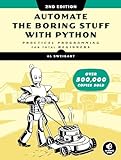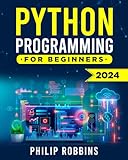To remove the currency symbol in a dataframe in pandas, you can use the str.replace() method along with regular expressions. You need to specify the currency symbol you want to remove and replace it with an empty string. This will effectively remove the currency symbol from the column containing currency values in the dataframe. Additionally, you can convert the currency values to numeric data type by using the astype() method after removing the currency symbol. This will allow you to perform numerical operations on the currency values in the dataframe.
Best Python Books to Read in November 2024
1

Rating is 5 out of 5
Fluent Python: Clear, Concise, and Effective Programming
2

Rating is 4.9 out of 5
Learning Python, 5th Edition
3

Rating is 4.8 out of 5
Python Crash Course, 3rd Edition: A Hands-On, Project-Based Introduction to Programming
4

Rating is 4.7 out of 5
Automate the Boring Stuff with Python, 2nd Edition: Practical Programming for Total Beginners
-
Language: english
-
Book - automate the boring stuff with python, 2nd edition: practical programming for total beginners
-
It is made up of premium quality material.
5

Rating is 4.6 out of 5
Python 3: The Comprehensive Guide to Hands-On Python Programming
6

Rating is 4.5 out of 5
Python Programming for Beginners: The Complete Guide to Mastering Python in 7 Days with Hands-On Exercises – Top Secret Coding Tips to Get an Unfair Advantage and Land Your Dream Job!
7

Rating is 4.4 out of 5
Python for Data Analysis: Data Wrangling with pandas, NumPy, and Jupyter
8

Rating is 4.3 out of 5
Python All-in-One For Dummies (For Dummies (Computer/Tech))
9

Rating is 4.2 out of 5
Python QuickStart Guide: The Simplified Beginner's Guide to Python Programming Using Hands-On Projects and Real-World Applications (QuickStart Guides™ - Technology)
10

Rating is 4.1 out of 5
The Big Book of Small Python Projects: 81 Easy Practice Programs
How to sanitize currency columns in a pandas dataframe?
To sanitize currency columns in a pandas dataframe, you can follow these steps:
- First, make sure the currency columns are stored as string data type in your dataframe.
- Remove any special characters or symbols (such as $, €, £) from the currency columns using the str.replace() method in pandas.
1
|
df['currency_column'] = df['currency_column'].str.replace('[\$\€\£]', '')
|
- Convert the currency columns to numeric data type using the pd.to_numeric() function in pandas.
1
|
df['currency_column'] = pd.to_numeric(df['currency_column'])
|
- If necessary, you can also round the values in the currency columns to the desired number of decimal places.
1
|
df['currency_column'] = df['currency_column'].round(decimals=2)
|
- Your currency columns in the dataframe should now be sanitized and ready for further analysis or processing.
How to accurately handle currency formatting in pandas dataframes?
To accurately handle currency formatting in pandas dataframes, you can use the built-in map function along with the locale module in Python. Here's a step-by-step guide:
- Import the necessary libraries:
1
2
|
import pandas as pd
import locale
|
- Set the desired locale for currency formatting. For example, for US currency:
1
|
locale.setlocale(locale.LC_ALL, 'en_US.UTF-8')
|
- Define a function that formats the currency:
1
2
|
def format_currency(value):
return locale.currency(value, grouping=True)
|
- Load your data into a pandas dataframe:
1
2
|
data = {'Amount': [1000, 2500, 5000, 7500]}
df = pd.DataFrame(data)
|
- Apply the format_currency function to the column you want to format:
1
|
df['Formatted Amount'] = df['Amount'].map(format_currency)
|
- Print the formatted dataframe:
This will output a dataframe with the currency values formatted according to the locale set. You can adjust the locale setting and formatting function as needed to suit your specific currency formatting requirements.
What is the most efficient way to eliminate currency symbols from a dataframe in pandas?
One efficient way to eliminate currency symbols from a dataframe in pandas is to use the str.replace() method along with regular expressions.
Here is an example code snippet that demonstrates how to eliminate currency symbols from a column named 'Price' in a dataframe named 'df':
1
2
3
4
5
6
7
8
9
10
|
import pandas as pd
# Sample dataframe
data = {'Price': ['$10.50', '$15.75', '$20.20', '$30.00']}
df = pd.DataFrame(data)
# Remove currency symbols from 'Price' column
df['Price'] = df['Price'].str.replace(r'[\$,]', '', regex=True)
print(df)
|
This code will remove both '$' and ',' symbols from the 'Price' column in the dataframe, allowing you to work with the numerical values directly.
How to remove foreign currency symbols from a pandas dataframe?
To remove foreign currency symbols from a pandas dataframe, you can use the str.replace() method along with regular expressions. Here is an example code snippet that shows how to remove foreign currency symbols from a pandas dataframe:
1
2
3
4
5
6
7
8
9
10
11
12
13
14
|
import pandas as pd
# Sample dataframe with currency symbols
data = {
'amount': ['€100', '$50', '¥500', '£75']
}
df = pd.DataFrame(data)
# Remove currency symbols from the 'amount' column
df['amount'] = df['amount'].str.replace('[€|$|¥|£]', '', regex=True)
# Display the modified dataframe
print(df)
|
In this example, we create a sample dataframe with a column containing amounts with different currency symbols. We then use the str.replace() method with a regular expression pattern [€|$|¥|£] to match any of the currency symbols (€, $, ¥, £) and replace them with an empty string.
After running this code, the modified dataframe will have the currency symbols removed from the 'amount' column.
How to extract numeric values from currency columns in pandas?
You can extract numeric values from currency columns in pandas by using the str.replace() function to remove the currency symbol and any extra characters, and then converting the values to numeric datatype using the pd.to_numeric() function. Here is an example code snippet to demonstrate this:
1
2
3
4
5
6
7
8
9
10
|
import pandas as pd
# Sample DataFrame with currency column
data = {'currency': ['$10.00', '$20.50', '$30.75', '$40.25']}
df = pd.DataFrame(data)
# Extract numeric values from currency column
df['numeric_value'] = pd.to_numeric(df['currency'].str.replace('[\$,]', '', regex=True))
print(df)
|
This code snippet will output the following DataFrame:
1
2
3
4
5
|
currency numeric_value
0 $10.00 10.00
1 $20.50 20.50
2 $30.75 30.75
3 $40.25 40.25
|
As you can see, the numeric_value column now contains the extracted numeric values from the currency column.
What is the correct procedure to strip currency symbols from multiple columns in pandas?
One correct procedure to strip currency symbols from multiple columns in pandas is as follows:
- Import the pandas library:
- Create a DataFrame with the currency symbols in multiple columns:
1
2
3
|
data = {'col1': ['$10', '$20', '$30'],
'col2': ['€100', '€200', '€300']}
df = pd.DataFrame(data)
|
- Loop through each column and use the str.replace() method to strip the currency symbols:
1
2
3
|
cols = ['col1', 'col2']
for col in cols:
df[col] = df[col].str.replace(r'[^0-9]', '', regex=True)
|
- Print the updated DataFrame:
This will remove all non-numeric characters from the specified columns in the DataFrame.









